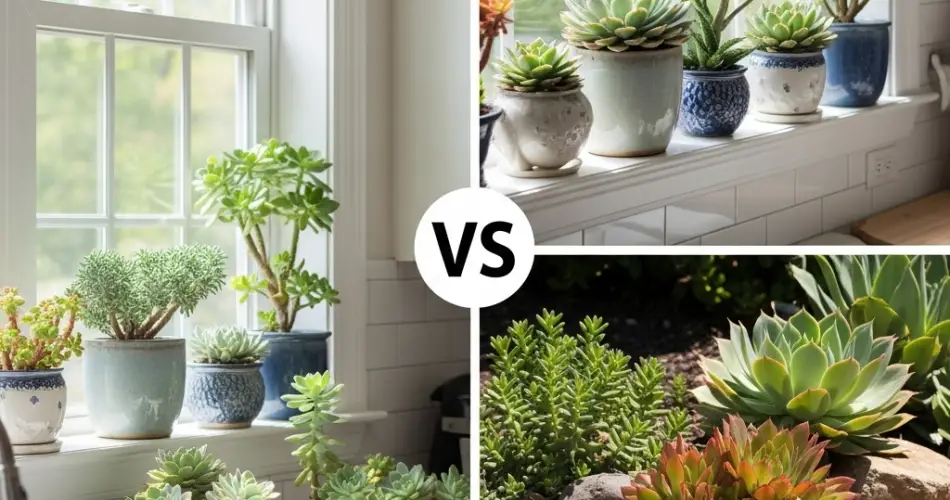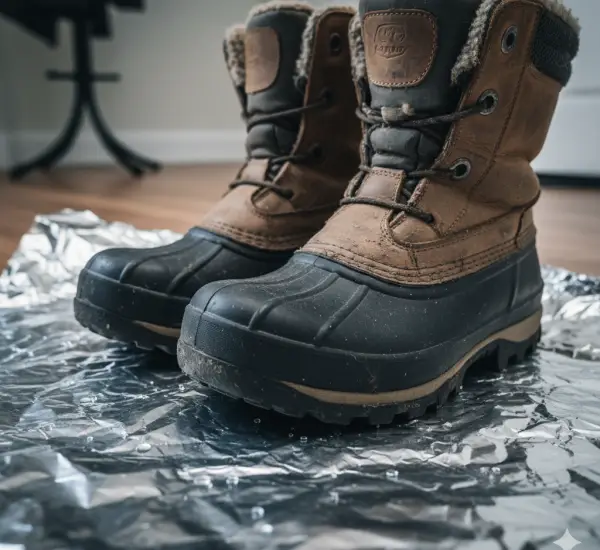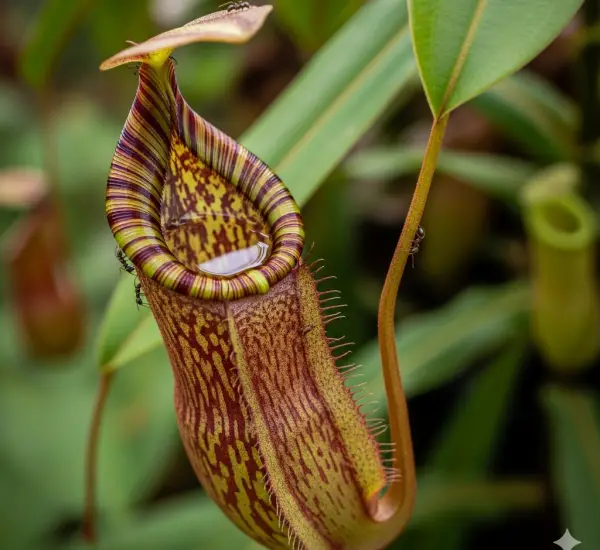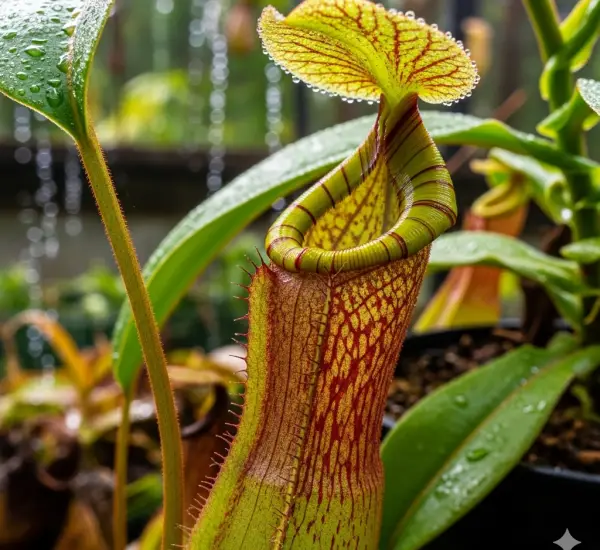Succulents are beloved for their low-maintenance care and beautiful, sculptural appearance. These drought-tolerant plants thrive in a variety of environments, making them ideal for both indoor and outdoor gardening. But while succulents are adaptable, growing them indoors versus outdoors presents different challenges and advantages.
Understanding the differences between these two environments will help you make the best decision for your plants — and ensure they thrive, no matter where you place them. Here’s a complete guide to growing succulents indoors vs outdoors.
Light Requirements
Indoors:
Succulents grown indoors often struggle with insufficient light. Most need bright, indirect sunlight for at least 4 to 6 hours a day. If placed too far from a light source, they can become leggy, pale, and weak as they stretch toward the light.
To help indoor succulents thrive:
-
Place them near a south- or east-facing window.
-
Rotate the pots regularly to promote even growth.
-
If natural light is limited, use grow lights to supplement.
Outdoors:
Outdoor succulents generally get plenty of light, which encourages compact growth and vibrant color. However, direct sunlight — especially in hot climates — can scorch tender leaves, particularly for younger plants.
To prevent sunburn:
-
Gradually acclimate succulents to direct sunlight.
-
Provide partial shade during peak afternoon heat.
-
Consider a spot with morning sun and afternoon shade, especially for varieties with delicate foliage.
Temperature and Climate
Indoors:
The controlled indoor climate is great for tropical or frost-sensitive succulents. They do well in average room temperatures between 60–80°F (16–27°C) and are protected from rain and extreme weather. However, they can suffer from dry air (especially in heated homes during winter) or sudden temperature changes near drafty windows.
Outdoors:
Outdoor succulents benefit from seasonal changes, which can enhance blooming and coloration. However, frost and freezing temperatures are harmful to many types, particularly soft-leaved varieties like echeveria or crassula.
If you live in a cooler region:
-
Move your succulents indoors when nighttime temps drop below 40°F (4°C).
-
Choose hardy succulents like sedum or sempervivum for year-round outdoor planting.
-
Use frost cloths or protective coverings during cold snaps.
Watering Needs
Indoors:
Succulents indoors dry out more slowly because of less air movement and lower light. Overwatering is the most common problem for indoor succulent care. Soil should dry out completely between waterings.
Tips for indoor watering:
-
Use the “soak and dry” method — water thoroughly, then wait until the soil is completely dry before watering again.
-
Make sure pots have drainage holes to prevent root rot.
-
Avoid misting, which encourages rot and fungus.
Outdoors:
Succulents outside dry out faster due to wind, sun, and temperature fluctuations. They generally require more frequent watering, especially in hot, dry climates.
Outdoor watering tips:
-
Water in the early morning or evening to reduce evaporation.
-
Check soil moisture regularly, particularly in containers or raised beds.
-
During rainy seasons, reduce or stop watering to prevent waterlogged soil.
Pests and Diseases
Indoors:
Indoor succulents are less prone to pests, but when infestations occur, they often involve mealybugs, spider mites, or fungus gnats. Poor air circulation and overwatering can lead to root rot or fungal diseases.
To prevent problems:
-
Inspect plants regularly.
-
Avoid letting water sit in the rosettes or leaf crevices.
-
Keep humidity moderate and ensure good airflow.
Outdoors:
Succulents outdoors face a wider range of pests like aphids, snails, slugs, or scale insects. They’re also exposed to fungal diseases in rainy or humid weather.
Protection strategies:
-
Remove pests by hand or use insecticidal soap or neem oil.
-
Ensure good soil drainage to reduce rot risk.
-
Use barriers or traps to keep slugs and snails away.
Growth and Appearance
Indoors:
Because of limited light and slower growth rates, indoor succulents may stay smaller and more delicate. Some may become leggy over time, losing their compact shape.
Outdoors:
Outdoor succulents usually grow faster and develop more vivid colors, thanks to sun exposure and seasonal variation. Stress from light and temperature shifts can bring out red, purple, or orange tints in many varieties.
Container and Soil Choice
Whether grown indoors or outdoors, succulents need:
-
Well-draining soil, ideally a cactus or succulent mix.
-
Unsealed clay pots or terracotta for better moisture regulation.
-
Adequate drainage holes to prevent root rot.
Which is Better — Indoors or Outdoors?
Both indoor and outdoor environments can support healthy succulents if managed properly. Here’s a quick breakdown:
| Environment | Pros | Cons |
|---|---|---|
| Indoors | Controlled temperature, fewer pests, decorative | Less light, slower growth, overwatering risk |
| Outdoors | Faster growth, more color, natural conditions | Pest exposure, weather stress, frost risk |
Final Thoughts
Succulents are versatile and adaptable, but understanding the specific needs of indoor vs outdoor growing is key to their success. If you live in a climate with mild winters and bright light, growing succulents outdoors may offer stunning, fast results. If you prefer year-round greenery with a little less mess, indoor succulents can thrive with proper light and watering care.
Wherever you grow them, succulents reward you with beauty, resilience, and low-maintenance charm — just be sure to match your care style to the environment.



